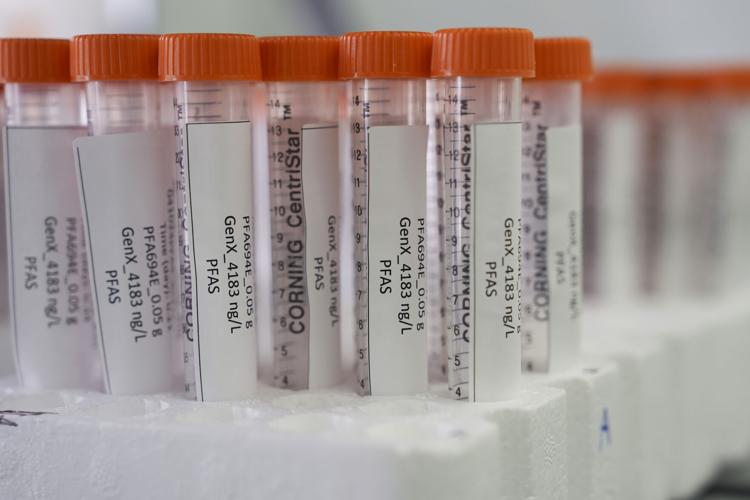Per- and polyfluoroalkyl substances (PFAS) are a class of human-made chemicals that have been used for decades in a wide range of industrial, commercial and consumer products. These chemicals are highly resistant to heat, water and oil, making them incredibly useful in products like nonstick cookware, water-repellent fabrics, stain-resistant carpets, firefighting foam and food packaging. However, the very properties that make PFAS so durable also mean that they do not break down easily in the environment, earning them the nickname ŌĆ£forever chemicals.ŌĆØ
What are PFAS?
PFAS is a group of more than 4,700 different chemicals, the most common of which are perfluorooctanoic acid (PFOA) and perfluorooctanesulfonic acid (PFOS), which have been integral to modern manufacturing processes. The very properties that make PFAS so durable also mean that they do not break down easily in the environment, earning them the nickname ŌĆ£forever chemicals.ŌĆØ
People are also reading…
Due to the fact they donŌĆÖt degrade naturally, PFAS have accumulated in both the environment and human bodies over time, raising concerns about human health and environmental impacts. Research has linked long-term exposure to PFAS with several health issues, including cancer, liver damage, immune system suppression, developmental delays in children and problems with pregnancy. The environmental persistence and potential toxicity of these substances make them a priority for regulatory agencies worldwide.
How PFAS get into the environment
PFAS enter the environment through a variety of routes, including industrial discharges, wastewater treatment plants, landfills and the use of firefighting foam. Industrial sites that manufacture or use PFAS-based products are significant sources of contamination, as they can release these chemicals into nearby waterways and soil. Once released, PFAS can travel long distances, contaminating groundwater, lakes, rivers and even agricultural soil.
Aqueous film-forming foam, which has been extensively used at military and civilian airports, fire departments, and training sites, is one of the most significant sources of PFAS contamination. The foam is highly effective at extinguishing fires, particularly those involving flammable liquids, but it is also a major contributor to PFAS pollution. When the foam is used, these chemicals are often washed off and carried into nearby water bodies, which can lead to widespread contamination.
In addition to industrial sites and firefighting practices, everyday products that contain PFAS can also contribute to environmental contamination. For instance, when nonstick cookware, water-repellent clothing or stain-resistant furniture is discarded, these chemicals can leach into landfills and seep into the surrounding soil and groundwater.

Jesse Lloyd
PFAS contamination in the Finger Lakes
The Finger Lakes region of New York state, known for its pristine lakes and agricultural industry, is not immune to PFAS contamination. Several of the areaŌĆÖs lakes and groundwater sources have been found to contain elevated levels of PFAS, which has sparked concerns among residents, environmental groups and local authorities.
Recent tests for PFAS "forever chemicals" in Seneca Lake and its tributaries indicate that contamination from the former Seneca Army Depot is spreading. Testing conducted by the Seneca Lake Pure Waters Association and Finger Lakes Institute showed that three streams flowing from the depot ŌĆö Kendaia Creek, Reeder Creek and Indian Creek ŌĆö had the elevated PFAS levels. Kendaia Creek had the most significant readings, aligning with prior state findings of high PFAS levels in fish there. In 2020, 27 lake trout and yellow perch were tested for PFOS levels. Of the tested fish, 79% exceeded 2,000 parts per trillion PFOS, and five fish registered more than 15,000. The highest result was 34,700. The Department of Health will not issue a "do not eat" order until the results reach 200,000 ppt.
The U.S. Environmental Protection Agency had previously asked the Army Corps of Engineers to test surface water and sediment from these creeks, but the Army did not agree. The ArmyŌĆÖs statement clarified its focus on sampling within the depotŌĆÖs boundary and only pursuing off-base sampling, if contamination spreads beyond the base. Previous studies showed high PFAS levels in groundwater near firefighting sites at the depot, and further results are expected this winter.
Global Aquatic Research LLC (globalaquaticresearch.com), a local environmental research firm, worked with the Canandaigua Lake Watershed Association in 2023 to determine PFAS levels in aquatic foam. They found that the water that makes up the foam on Canandaigua Lake is enriched in PFAS 70 times above normal lake water, with nearly 400 parts per trillion total PFAS in each of the three foam samples they took compared to only about 5 in a surface water sample. PFOS, which contains sulfur and is one of the few PFAS types regulated in drinking water by the EPA, was absent in the lake water sample but one of the most concentrated compounds in foam. Rick Smith of GAR stated, ŌĆ£This study showed that we must seek a complete understanding of the fate of PFAS in our lakes to determine human exposure pathways and potential remediation solutions.ŌĆØ
What is being done about PFAS in the Finger Lakes?
Given the widespread nature of PFAS contamination, local, state and federal agencies have taken a variety of steps to address the issue in the Finger Lakes region. These actions are aimed at reducing further pollution, cleaning up existing contamination and protecting public health.
The Biden-Harris administration delivered on several key promises to tackle PFAS contamination by regulating the chemicals in drinking water, designating PFAS as hazardous substances under the Federal Superfund Law, ending government purchases of some products containing PFAS, and funding additional research into the chemicals. Designating PFOA and PFOS as hazardous substances under the law jumpstarted PFAS cleanups and helped the EPA hold polluters accountable.
On Jan. 21, the Trump administration withdrew the long-awaited proposal on setting PFAS effluent limits, which was the stepping stone to set limits on discharging this chemical into our drinking water. This is a devastating setback in the fight to protect our communities from toxic ŌĆ£forever chemicals.ŌĆØ
The following is a quote from Melanie Benesh, vice president for government affairs at the Environmental Working Group: ŌĆ£This move not only delays establishing critical federal standards, but also sends a dangerous message giving polluters a green light to continue poisoning our water and communities without fear of consequence. ItŌĆÖs an unconscionable betrayal of the publicŌĆÖs health in favor of corporate interests, and it underscores this administrationŌĆÖs troubling shift in policy, which threatens to roll back any progress to protect our environment and hold polluters accountable.ŌĆØ
Moving forward: challenges and solutions
The New York State Department of Environmental Conservation recently updated its Division of Water PFAS and 1,4-Dioxane Information Portal to include ambient surface water monitoring data as well as data submitted from ŌĆ£priority facilities.ŌĆØ This updated portal provides information related to discharges of these emerging contaminants and their concentrations observed in the environment. The link to the updated portal, along with additional information about emerging contaminants in New York's waters, can be found on the Division of Water's ŌĆ£Emerging Contaminants In NYŌĆÖs WatersŌĆØ webpage.
While progress is being made in addressing PFAS contamination in the Finger Lakes, the challenge of completely eliminating these chemicals from the environment remains an uphill battle. Due to their persistence, long-term efforts will be required to monitor, clean up and prevent further contamination.
The regionŌĆÖs water resources, agricultural practices and public health are all at stake, and ensuring that adequate resources are allocated to address the PFAS issue will be crucial in protecting the Finger Lakes for future generations.
In the meantime, the Finger Lakes communityŌĆÖs commitment to advancing lake-friendly living practices, coupled with ongoing regulatory measures, offers hope for mitigating the impact of these ŌĆ£forever chemicalsŌĆØ on this iconic region.
An untold number of New Yorkers are subjected ŌĆö sometimes unknowingly ŌĆö to unsafe PFAS chemicals in their water. The state doesn't require treatment until contamination reaches a certain level.















